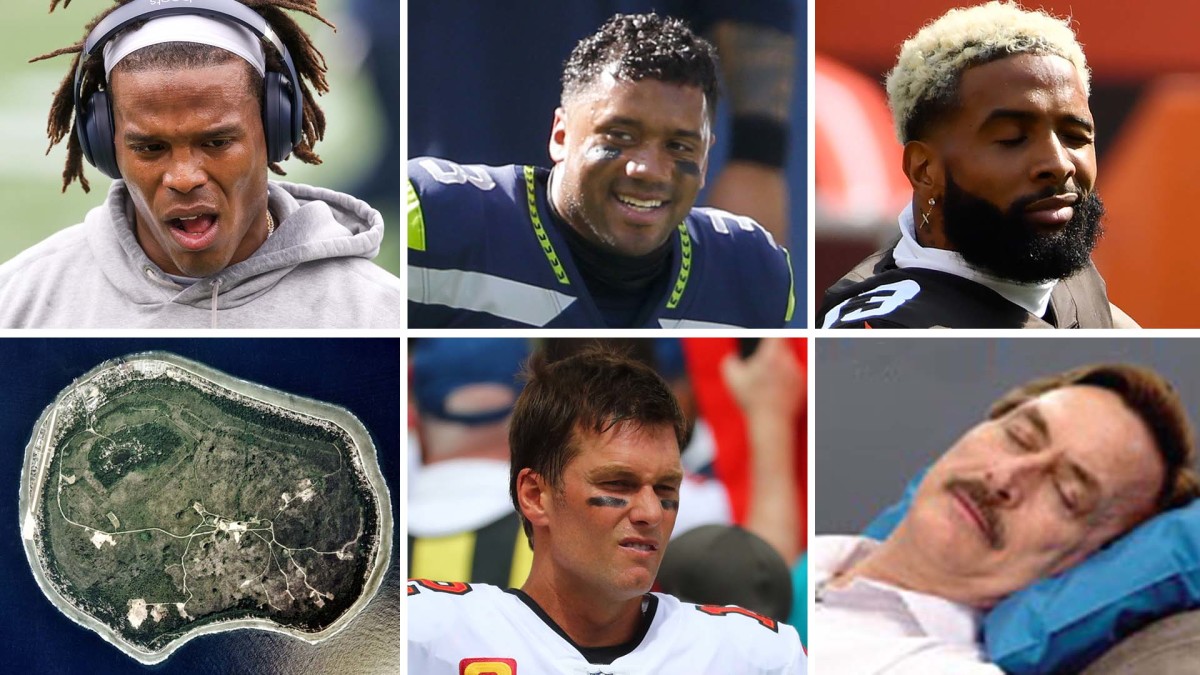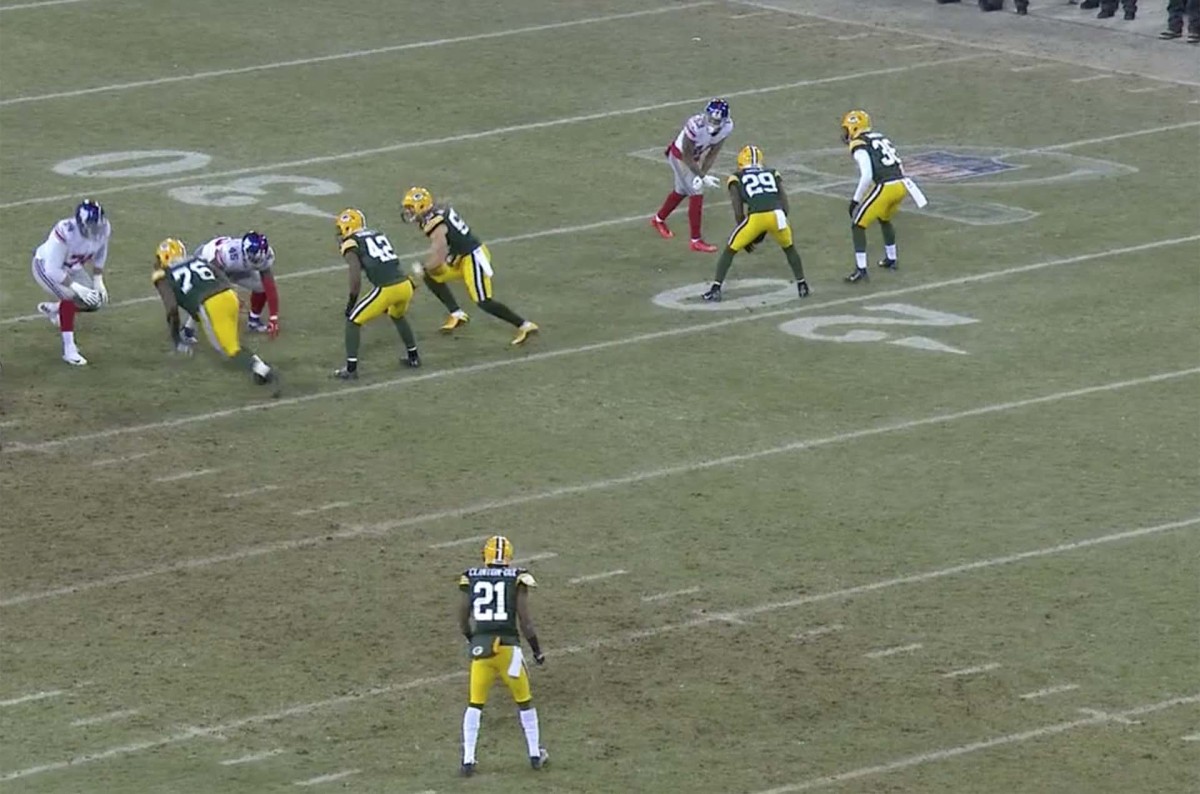Week 4 Preview: Russ and the Offense That Only Scores Touchdowns, That COVID Stuff
1a. The date is Feb. 6, 2021. It’s been 17 days since the MyPillow Guy was sworn in as the 46th President of the United States (it was an incredible 11th-hour write-in campaign after cable news channels just wouldn't stop booking him). But despite his promise to cure COVID by lulling the novel coronavirus to sleep upon encased shredded polyfoam, the pandemic shows no signs of slowing down. Still, the nation’s collective spirit will surely be lifted in 32 hours, when Super Bowl LV, pitting the hometown Bucs against the defending champion Chiefs, kicks off in Tampa.
Alas, on the Saturday morning before the game, Tom Brady’s most recent COVID-19 test is revealed to be positive. What does the league do? Or what if, instead of Brady, it’s Tyrann Mathieu? Or Ali Marpet and Donovan Smith? Or Harrison Butker? Or Mike Edwards? Or Steve Spagnuolo?
It’s a trick question: The answer is that if anyone—player or staff—has tested positive, you postpone the game for at least a week. Not just the Super Bowl, but any game. That’s why it was so baffling that the Titans still traveled to Minnesota last week despite multiple positive tests in their building, yet the league immediately moved to postpone Patriots-Chiefs in light of Cam Newton testing positive. It’s a virus, it’s not more contagious just because it’s Cam Newton.

In a perfect world, players and staff would be social-distancing 24/7, acting as if everyone is COVID positive. Just watching the sidelines during games, that hasn’t been happening. It’s probably safe to assume that it hasn’t been happening in practices either. So to assume that you can remove the guy who tested positive and then no other positive tests will pop up in the next few days is, to put it kindly, wishful. And that’s before you factor in the risk of potential transmission to an opponent.
Anyway, my esteemed colleague Mitch Goldich was right: If you wanted to stage a season safely, make it an eight- (or maybe nine-) game regular season, with two weeks between every team's games (with AFC and NFC alternating weeks; Mitch wrote a whole thing). But, with two games postponed indefinitely right now, the league is going to have to accept that a 256-game season is increasingly unlikely. We’re less than 20% of the way into the regular season and... well, tell ’em Chief:
1b. Jenny Vrentas is smarter than me, so you probably shouldn’t have been wasting your time reading this. Sorry, no going back now.
1c. The NFL’s latest struggle with the realities of science reminds me of the concussion Julian Edelman sustained in Super Bowl XLIX, when he took Kam Chancellor's helmet to his earhole then stumbled downfield like the worst dizzy bat player of all time. But Edelman never came out of the game because, you know, the human brain becomes impervious to physical trauma during very important football games. It’s Biology 101.
1d. Considering Nauru’s history since gaining independence 52 years ago, if the NFL didn’t reach out to gauge the island nation’s interest in constructing six football fields for the purpose of hosting a postseason bubble in January and February it is truly a missed opportunity.
* * *
2. Life is good in Seattle, where Russell Wilson is metaphorically heating food to temperatures that are appropriate for consumption, the resulting offense is averaging 37.0 points per game (trailing only the Packers), and the Seahawks are 3-0.
The bad news is two-fold: The defense—which was powered by fluke turnovers a year ago—has been exposed, allowing 497.3 yards per game through Week 3 (for context, the all time record for yardage allowed in a single season is 440.1, by the 2012 Saints). And now they’re missing Jamal Adams, who is their best player on that side of the ball by a wide margin.
The less glaring problem is the fact that, right now, the Seahawks are one of only three teams NFL teams averaging five punts per game, along with the Bengals and the Football Team. How does a team rank among the league leaders in punts and points? By scoring—almost literally—only touchdowns.
The Seahawks have only attempted one field goal through three games (Jason Myers made it). They are 9-for-9 in the red zone. Typically, scoring two out of every three red zone trips will have you among the league’s most efficient red zone offenses. The 2003 Chiefs had the best single-season red-zone offense ever, scoring on 77.8% of their red zone trips and averaging 6.0 points per red-zone possession (Seattle is at 7.1 in the latter category right now).
This is normally when I tell you the Seahawks are staring at an inevitable regression and will finish the season 3-13. But know this about the Seahawks’ red-zone performance: Their touchdowns have come with incredible ease. Wilson is 11-for-12 passing in the red zone. They've only had to run a third-down play once over nine red-zone trips.
I did want to highlight two neat plays from the Week 2 win over the Patriots. The first was this Fred Swain walk-in touchdown (which was, technically, from just outside the red zone). Cris Collinsworth highlighted it that night: Tyler Lockett in a three-point stance in the backfield threw the Patriots into chaos, and DK Metcalf delivered a Marcin Gortat-caliber pick for good measure.
But my favorite red-zone play this year was a matter of offensive coordinator Brian Schottenheimer knowing his offense's tendencies, and knowing how well the Patriots would know his offense's tendencies, and then exploiting his opponent's preparation. Adrian Phillips has Chris Carson coming out of the backfield and is expecting Carson to release to the flat, which is probably the only thing the Patriots had seen Carson do on tape. Instead, Carson releases inside, Phillips plays it precisely as the Seahawks know he’ll play it and ends up grasping at the air as Carson runs past him. The two tight ends—the only other eligibles on that side of the field—clear out, and the result is a free touchdown.
There will be regression because no one is going to go perfect in the red zone over the course of a season, not even me. And red-zone performance is an awfully fickle stat year to year. But with this kind of red-zone play-calling, Seattle should be one of the—if not the—most efficient red-zone offenses in the NFL.
2b. Also, consider that their two turnovers this year were very much of the fluke variety: a dump-off in the flat to a wide-open Greg Olsen that he batted to the Patriots for a pick-six, and DK Metcalf’s insistence that NFL fields be 97 yards long and refusing to finish his walk into the end zone before Cowboys DB Trevon Diggs punched the ball out of Metcalf's hands and out the back of the end zone. Can the Seahawks win a title with the worst defense in football? A decade ago you would have said no and punched me in the crotch for asking such a foolish question. But as the NFL looks more and more like the Big 12 every week, this team has a chance.
2c. Respected private citizen Andy Benoit had a nice breakdown of running backs and inside releases this summer. (The example is also against the Patriots, and Kyle Van Noy resorts to the same desperate, flailing grab that Phillips did in Seattle!)
* * *
3. Considering they currently have more wins than losses for the first time since the advent of the internet (approximately), we should lay off the Browns’ lackluster passing offense. Sure, Baker Mayfield looks a lot like Kirk Cousins Jr. right now, but after a year in which there was no offensive identity, no semblance of a game plan, no basic functionality for the unit as a whole, going back to square one was probably a necessity. And if things go well in 2020, they can start to build out a more expansive passing offense in 2021, when things are (hopefully) a little more normal over the course of the offseason.
Still… Odell Beckham Jr. as supporting actor in an offense is tough to get used to. Four seasons ago he was drawing this kind of coverage in a playoff game:

* * *
4a. The inevitable has arrived sooner than expected, and that’s the Bucs being the best team in the NFC. Yes, the Packers and Seahawks are very good as well—in fact, each of the conference's 16 teams try their hardest in every game and for that they should all be commended. But the Packers have some question marks on defense (linebackers without Christian Kirksey, defensive backfield outside Jaire Alexander), and some wonder whether the Seahawks should continue to field a defense or just concede to opposing offenses in order to get Russell Wilson back on the field as soon as possible.
Meanwhile, in Tampa, the young secondary has blossomed into a mighty fine unit while the front seven remains one of the better groups in football; this could easily end up a top-five defense. And as for the offense, it’s coming together faster than could have reasonably been expected. Some of that is Tom Brady and his receivers building rapport, but a good portion of it is due to Donovan Smith steadying at left tackle after a Week 1 meltdown in New Orleans while rookie Tristan Wirfs holds his own at right tackle.
Brady’s ability to get the ball out in an appropriate amount of time makes blocking for him a little easier. But on Sunday, those tackles get a major test against a Chargers pass rush—specifically one Joey Bosa, who will see action on both sides of the line—that nearly wrecked Patrick Mahomes and the Chiefs two weeks ago.
Blocking for Tom Brady doesn’t take an in-his-prime Orlando Pace and four of his clones, but it does take an offensive tackle duo who are on the preferred side of “good enough.” The Smith/Wirfs duo has been that over the past two weeks, and a similar performance against the Chargers—one of the few teams that can consistently generate pressure with their four-man rush—would signal that the Bucs are going to be very good at football throughout 2020.
4b. Bucs-Chargers will also feature 43-year-old Brady vs. 22-year-old Justin Herbert, which is an especially large age gap between two starting quarterbacks. To put that in perspective: Ever since Justin Herbert was born, Tom Brady has been 21 years older than him. Will Brady be able to maintain that large age gap? Only time will tell.
* * *
5. Ladies and gentlemen . . . Zach Heckendorf!
• Question or comment? Email us.
